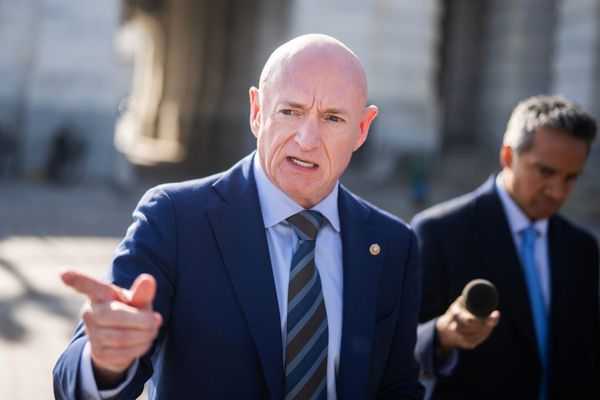BOISE, Idaho — Idaho authorities have alleged that Bryan Kohberger’s cellphone records showed he was in the Moscow area less than an hour after four University of Idaho students were stabbed to death in an off-campus house — and that he visited the “coverage area” of the home 12 times before the homicides.
But telecommunications expert and former electrical engineer Ben Levitan, who has analyzed cellphone data for the well-known Adnan Syed case featured in the “Serial” podcast, told the Idaho Statesman that while cellphone records can provide someone’s estimated location, they can’t pinpoint an individual’s exact location.
Kohberger, the 28-year-old former grad student, is charged with four counts of first-degree murder of seniors Madison Mogen, 21, of Coeur d’Alene, and Kaylee Goncalves, 21, of Rathdrum; junior Xana Kernodle, 20, of Post Falls; and freshman Ethan Chapin, 20, of Mount Vernon, Washington.
In the 18-page probable cause affidavit — which must only be detailed enough to give law enforcement the authority to make an arrest, not support a conviction — police said they used DNA evidence, surveillance footage and vehicle records to hone in on the former Washington State University graduate student.
The Statesman spoke with Levitan to ask about law enforcement agencies’ use of cellphone records in a criminal investigation.
Was Kohberger near King Road home before stabbings?
In the affidavit, the Moscow Police Department alleged that Kohbeger used his cellphone in the “coverage area” of the King Road home at least 12 times before the November stabbings.
But Levitan said a typical cellphone tower covers an area of 12 square miles. Someone could be miles away from the nearest cell tower, and Moscow is a roughly 3-by-5-mile town.
“You cannot pinpoint a person,” Levitan said about cellphone records. “There’s no chance any expert in the world can tell you where that person is located.”
Levitan added that the nearest cell tower to the King Road home covers an area of 27.3 square miles — the same size as nearly 14,000 football fields.
Moscow police said Kohberger’s historical phone records were pulled to determine whether Kohberger “stalked any of the victims” before the stabbings. Levitan said if authorities during the court proceedings try to show Kohberger visited the home 12 times, “they will be wrong and could damage their case.”
Was Kohberger in Moscow area during stabbings?
Levitan said authorities could definitely use cellphone records to tell whether a person is traveling if the individual is using their phone because as someone moves throughout an area, the cellphone transfers from one cell tower to the next as it goes into the next cell range.
The affidavit alleged that Kohberger traveled from Blaine, Idaho, which is just south of Moscow, to Pullman from 4:50 a.m. to roughly 5:30 a.m. — roughly 35 to 50 minutes after the stabbings occurred.
“They can’t get that wrong,” Levitan said.
The cell records, police say, match up with Washington State University surveillance footage that showed a white Hyundai Elantra — the same car model Kohberger owned — traveling through the Pullman campus.
Kohberger’s cell records never show him traveling to Moscow on the night of the homicides, and the affidavit alleged that he attempted to “conceal his location during the quadruple homicide,” because his cellphone wasn’t showing up on the network from 2:47 a.m. to 4:48 a.m.
Police in the affidavit said that a phone not reporting to the network could mean it was in airplane mode, turned off, or in an area without service. Levitan said that it’s impossible to know for sure that Kohberger turned off his phone unless someone called Kohberger during the two-hour period and the call records showed that his phone went straight to voicemail.
He added that if someone’s phone isn’t showing up on the network, all it means is that they didn’t receive any calls or texts or use any apps during that time period.
How many cell towers are in Moscow?
A list provided by Levitan, which he has gathered from his years testifying in various cases, showed a total of four cell towers in Moscow — including the nearest one to King Road, which is along Paradise Creek Street.
The three other cell towers within the city of Moscow, according to Levitan’s list, are near Residence Street, East F Street and Paradise Ridge. A cell tower also sits along Foothill Road, which is west of Moscow Mountain and about 10 miles outside of the city.
The Federal Communications Commission doesn’t maintain a complete national database of cell towers, a spokesperson said. The database that the FCC does maintain includes cell towers that are primarily being used for broadcasting and phones, are over 200 feet, or are within the glide slope of an airport.
But the FCC’s database only shows two cellphone towers within city limits, and Levitan said that most cell towers are not in the database. The closest towers to the King Road home are along Old Pullman Road just off the Idaho-Washington border and one next to the Moscow Church of the Nazarene, according to the FCC database.
Both of those structures are roughly two miles from the off-campus house. The nearest cell tower from Levitan’s list is a little over half a mile from the King Road home.
AT&T, which is the provider for Kohberger’s phone, declined to comment and suggested the Statesman reach out to the Cellular Telecommunications Industry Association. The association also declined to comment.
How reliable are cellphone records in court?
Levitan said cellphone records are completely reliable, but that authorities tend to overplay them. He added that cellphone records could help exclude suspects by showing they weren’t within a tower’s coverage area.
But, Levitan said, when someone does show up in the coverage area of a cellphone tower, it doesn’t mean they were at the scene of the crime.
“Cellphone records as evidence are very reliable and useful, but it’s not DNA,” Levitan said in a follow-up email. “It doesn’t have the precision that would allow you to pinpoint a person’s phone. The best the state can say is that this phone was in a 27-square-mile area that includes the crime scene 12 times.”
———







